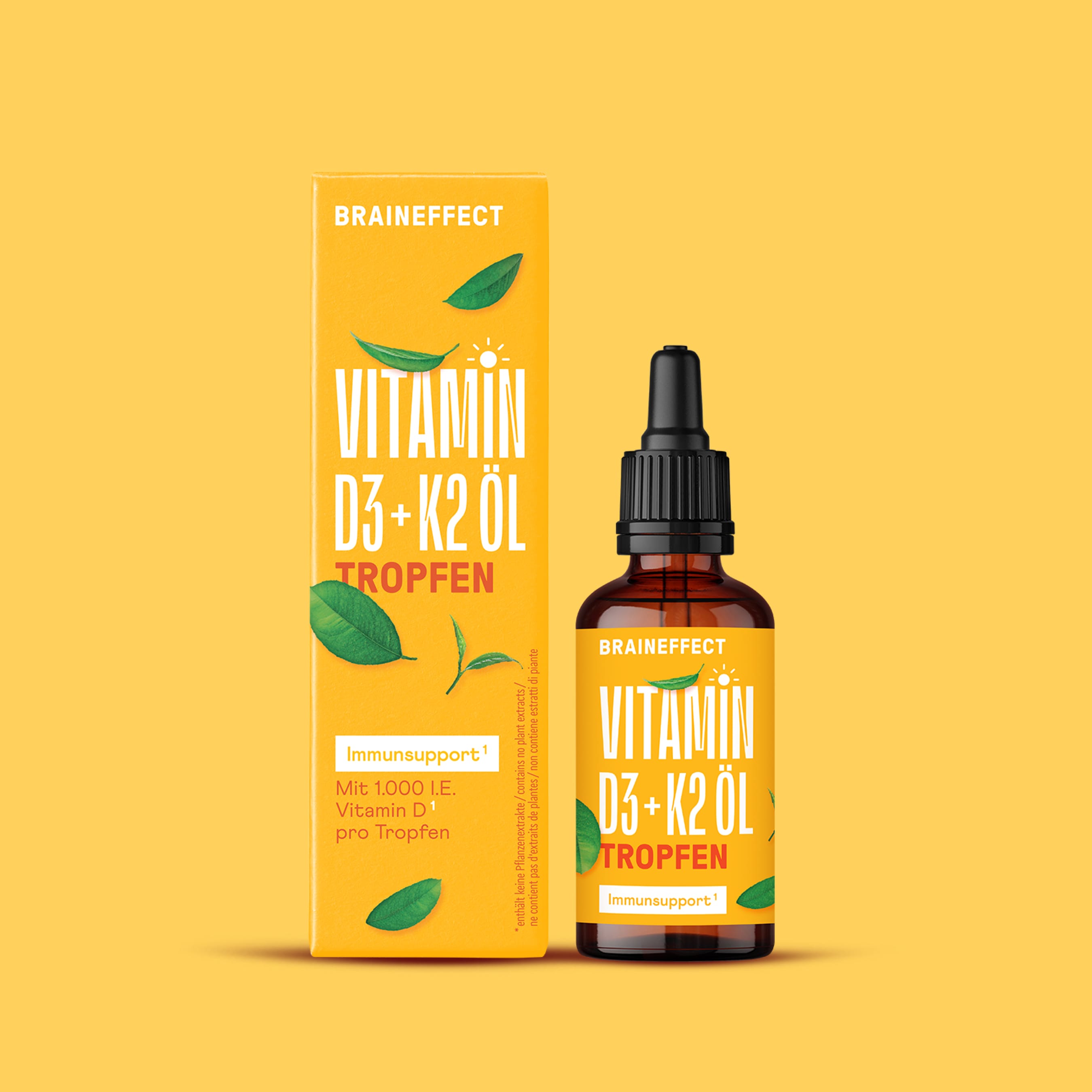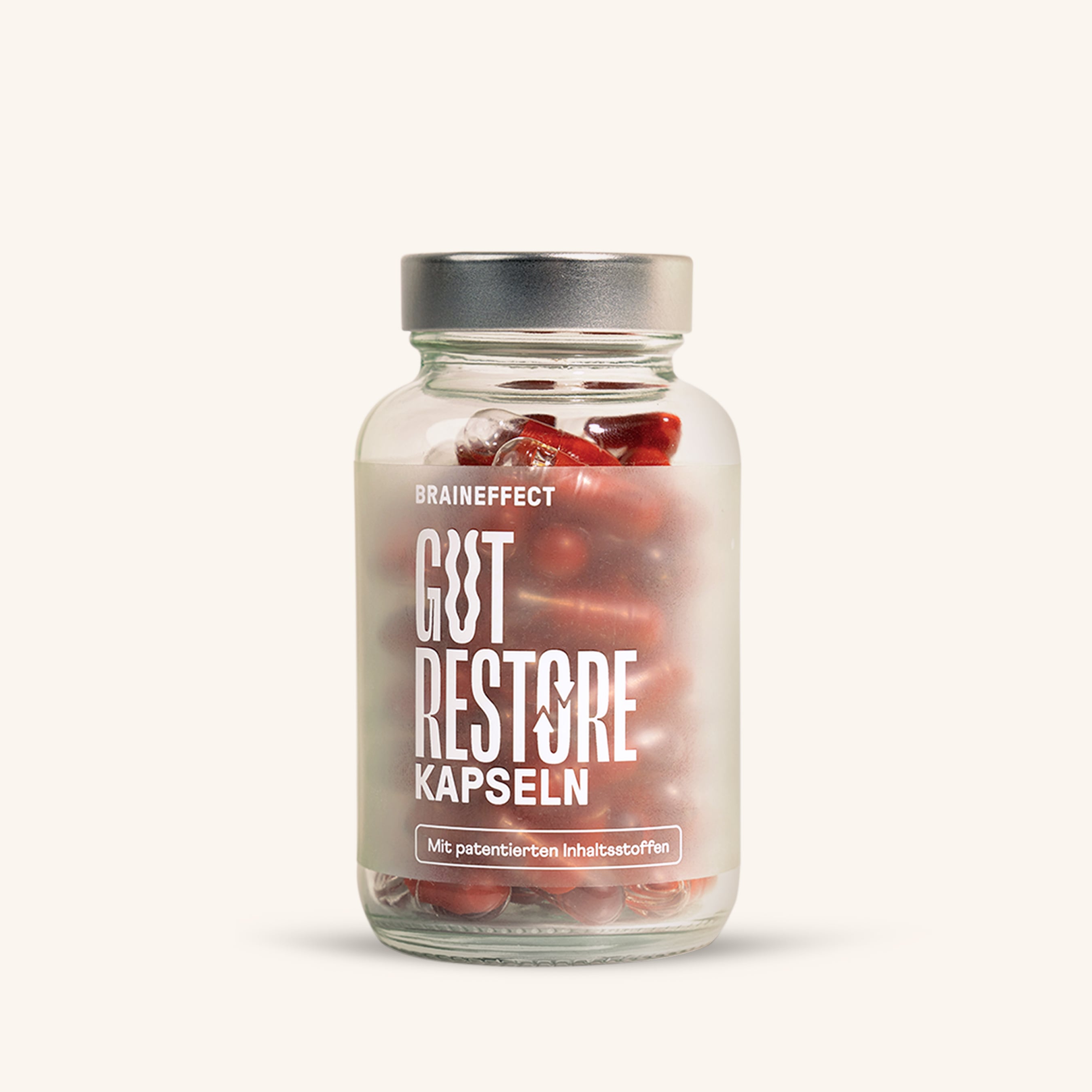Your body's cellular powerhouses, the so-called "mitochondria," are currently receiving extreme hype among biohackers—and rightly so. Mitochondrial efficiency can be increased naturally, boosting your athletic and mental performance across the board.
But let's rewind to the beginning: What are mitochondria, what function do they have, and how can you maximize your performance with them? You can find the answers here.
Table of contents
1. What is a mitochondrion? A biological definition
To understand our cellular power plants, we need to take a brief excursion into biology. Mitochondria are the smallest components of your cells , also known as the body's power plants because their primary function is to produce energy .
A mitochondrion can multiply and is found in various body cells, such as nerve cells, whose endings (axons) are surrounded by a protective myelin sheath. A mitochondrion is shaped like a bean, sometimes round, and is surrounded by an inner membrane and an outer membrane layer.
While the outer membrane is smooth, the inner membrane is corrugated or ridged—and these spaces contain a fluid matrix. This matrix, in turn, contains important proteins of the respiratory chain, which is responsible for the production of ATP (adenosine triphosphate), i.e., cellular energy.
In addition, the matrix of a mitochondrion contains ribosomes and a genome, which stores genetic information and a portion of a person's DNA. This alone demonstrates how important the health of every single cell in the human body is, because even their own DNA is contained within them.
Take-Home Message #1: Mitochondria are your body's cellular powerhouses. They produce all the energy for your body and brain. Without well-functioning mitochondria, you won't perform at your best.
BRAINEFFECT HACK : Many biohackers swear by ketosis. This is a state in which your body no longer relies on glucose as an energy source, but instead relies on fats. These are converted into so-called ketone bodies and can be used immediately as an energy source. Your body is particularly able to produce ketone bodies from MCT oil, such as our MCT C8 oil .
2. Function: What your mitochondria can do
Would you like to work more effectively, but something's holding you back? Would you like to exercise more, but just can't manage it regularly? Then the most common reason is a simple lack of energy. Sure, we all want "more energy," but what does this mean on a biochemical level?
Inefficient mitochondrial function is usually recognized by chronic fatigue and listlessness. You need energy every second of your life. You need it to curl your little finger and form the simplest thought.
It's clear that with all the daily tasks and physical challenges, you can sometimes experience a lack of energy. This required energy is produced throughout your body, in billions of cells, or more precisely, in the mitochondria.
The better your mitochondria function, the more energy they can produce , and you'll be at your optimal performance and health. To understand how to improve your mitochondrial power, you first need to understand how they work.
The proteins and enzymes in the mitochondrial respiratory chain are crucial here, as they allow electrons to be transported. This process ultimately creates a proton gradient, which initiates ATP synthesis.
3. An introduction to ATP production
The mitochondria convert food and body fat into ATP , the universal energy currency that can be used throughout the body for energy processes. Food, or rather, the already stored body fat, provides the starting material for this process.
These can be either carbohydrates (glucose) or fats (ketones) , or in certain life situations, proteins (amino acids) . The body can use all three energy sources to produce ATP . ATP is a "nucleoside" made up of three phosphates with strong bonds. By breaking these bonds, the body can release energy that can be used for movement and thought processes.
When you start moving, a distinction is made between aerobic and anaerobic energy production. Your body uses aerobic energy production during moderate activity using oxygen.
By using oxygen to generate energy, no lactate is produced, so you can perform moderate activity for a long period of time without getting tired.
However, if the activity is too intense, such as a 200m sprint, your body cannot utilize the oxygen quickly enough.
This is where anaerobic energy production comes into play. This means that your body now produces more energy than it has available oxygen. This creates lactate, which accumulates in your muscles and causes them to become weak. At the same time, this creates an oxygen debt in your energy circulation.
This is also the reason why you simply can't sprint 1,000 meters at your top speed. This explains, for example, the feeling of being "out of breath" after running quickly up a flight of stairs. In several steps, glucose is broken down bit by bit and converted into oxygen. The aerobic system is therefore sometimes referred to as "cellular respiration."
Take-Home Message #2: ATP production is a highly complex system, with mitochondria at its core. If these aren't functioning properly, your entire energy production and thus your performance are impaired.
BRAINEFFECT HACK : To utilize ketones for ATP production, your body needs the right fats. MCT oil made from high-quality caprylic acid C8 can be converted into ketone bodies particularly quickly. That's why we use exclusively caprylic acid from coconut in our BRAINEFFECT MCT Oil ROCKET C8 .
4. How to increase your mitochondria - naturally!
Ideally, you should use completely natural means to optimize the performance of your mitochondria and build new ones. So, if you want to increase your mitochondria, you can keep two important points in mind:
- You have to get out of your comfort zone. Our bodies are evolutionarily designed to cope with extreme situations. These require a lot of energy. The more you subject your body to short-term stress, the more efficient your mitochondria become.
- You can create new mitochondria: With a few hacks, you can ensure that your body shuts down old, inefficient power plants and creates new mitochondria.
You can now use the following 5 hacks to improve and increase your existing mitochondria. It's best to pick one or two tips and implement them immediately.
1. HIIT exercise
One of the best ways to boost energy and increase your mitochondria count is HIIT training (High Intensity Interval Training), which is characterized by short and very intense training pulses.
A study from McMaster University in Canada has now confirmed the positive impact of HIIT training on mitochondrial function. [1] Like everything else in your body, mitochondria deteriorate when they are not used.
In other words, if you exercise little, your mitochondrial count decreases; if you exercise a lot, it increases. Therefore, people who exercise regularly have, among other things, more energy available.
HIIT training places the highest demands on the body's energy production and mitochondria, which in turn increases the body's mitochondria production. CrossFit, by the way, is a great HIIT sport.
2. Strength training
A study from the University of South Carolina shows that strength training can increase mitochondrial biogenesis in this brain region. So head to the gym and lift heavy weights with few repetitions.
3. Good sleep
It's also very important to maintain and protect the overall health of your cells. How do you do this? Essentially, you should make sure you treat your body well.
This means getting enough sleep (because your cells regenerate at night), drinking plenty of water (your cells are made up of 70% water), avoiding free radicals, and eating plenty of antioxidants.
Free radicals can attack and destroy your cells, resulting in oxidative stress . Above all, you should pay the attention it deserves to sleep. Your mitochondria also regenerate during sleep.
Studies show that we have significantly less energy and performance if we sleep less than six hours. Whether you're an athlete or an office worker, without good sleep, your cellular powerhouses can't function properly. You can find out more about sleep optimization here.
BRAINEFFECT HACK : To help you fall asleep faster, we have developed our SLEEP capsules and our SLEEP SPRAY with melatonin.
4. Ketogenic diet
The ketogenic diet is a very special trigger when it comes to a positive influence on mitochondrial function. The so-called keto diet, with the goal of ketosis , is a diet based solely on healthy fats, in which carbohydrates are almost completely avoided.
In addition to being a more stable energy source than glucose, fat is also better for your cellular health. When glucose is burned, the mitochondria work at full speed, producing numerous free radicals that, in turn, damage the mitochondria.
If you follow a keto diet, fewer free radicals are produced, thus protecting your mitochondria. A study by the American Society for Biochemistry and Molecular Biology has now shown that the keto diet is also suitable as a therapeutic approach. [2]
According to researchers, cells and mitochondria are better protected and age more slowly on the keto diet. However, in our experience, the ketogenic diet is particularly beneficial in cycles, i.e., for a few weeks or months. You can find more information on ketogenic diets and ketogenic nutrition here.
BRAINEFFECT HACK : If you're already following a ketogenic diet, various performance foods like MCT C8 oil are particularly well-suited for you. You can find many other products for the ketogenic diet here.
5. Cold thermogenesis & cold training
What's the best way to get out of your comfort zone? By exposing your body to high temperatures. That's why many athletes and anti-aging experts swear by cold thermogenesis , better known as ice baths.
Through cold training, you expose your body to new stimuli and train it down to the cellular level. Studies show hormonal and health benefits of cold training for the mitochondria. For example, the transcriptional coactivator PGC-1 is induced.
This is a regulatory protein of energy metabolism that stimulates mitochondrial biogenesis and respiration in muscle cells through multiple pathways. The result: Your mitochondria can multiply, old ones die off , and fat oxidation in brown adipose tissue improves .
This fatty tissue is particularly prominent in babies and gradually diminishes in adulthood. Unlike white adipose tissue, this fatty tissue contains numerous mitochondria that directly oxidize the fat, thereby generating heat.
6. Calorie restriction & intermittent fasting
Currently, researchers consider calorie restriction to be one of the few ways to live longer. You're probably already familiar with the story of the Okinawa Centenarian Village in Japan.
The village has a significantly higher proportion of people over 100 years old. This is associated with a calorie intake that is approximately 20% lower than in the rest of Japan. Due to dietary restrictions, old mitochondria die and new ones are formed .
We recommend fasting completely for 3 days per month for best results. If you don't feel like fasting for 3 days, then short-term calorie restriction through intermittent fasting is just right for you. You can find out more about this here.
Take-Home Message #3: Whether through proper training, nutrition, or lifestyle: How efficient your mitochondria are is entirely up to you, and your options are numerous!
5. Foods for better mitochondria
You can also strengthen your mitochondria through your diet. You have two options. First, you should ensure that you consume all the important micronutrients through a balanced diet so that your mitochondria can function.
A balanced and varied diet with plenty of alkaline-forming vegetables , as well as sufficient manganese, B vitamins, magnesium , selenium, vitamin D , and zinc, is your foundation for strengthening your mitochondria. As always, regional and organic fruits and vegetables are particularly recommended.
Second, you should reduce your meat consumption and eat fewer processed foods . We're often asked if there is such a thing as "mitochondrial food"? The answer is a resounding no. There are no specific foods specifically for mitochondria. However, you can strengthen your mitochondria through dietary supplements.
6. These supplements love your cells
As biohackers, we always follow the principle "Little effort, big impact." Therefore, supplements and dietary supplements are a way to strengthen your mitochondria and provide all the necessary micronutrients. Here's a list from current research:
1. Resveratrol : Is a glass of wine a day healthy? This claim is based primarily on the ingredient resveratrol. Studies have observed similar life-extending effects and positive reactions on mitochondria with resveratrol as with a calorie-restricted diet. You can also get resveratrol from Japanese knotweed, for example. We recommend 500mg three times a week, for example, through our Trans-Resveratrol capsules .
2. Alpha Lipoic Acid: Studies show that alpha lipoic acid promotes mitochondrial function. It's important to make sure you choose the R version. We recommend 100 mg per day.
3. PQQ: PQQ is the better version of coenzyme Q10 (Q10). Studies show increased mitochondrial growth and energy production. Because PQQ is very expensive, we are not yet making a recommendation and recommend Q10.
4. Coenzyme Q10 (ubiquinol): There are two versions of Q10, ubiquinone and ubiquinol. The latter has better bioavailability but is significantly harder to produce. Cofactor Q10 is directly involved in energy metabolism in the mitochondria and is produced by the body itself. However, Q10 production decreases with age. We recommend approximately 60 mg of ubiquinol or 200 mg of ubiquinol. You can find more information here.
5. Ribose: Ribose is a sugar that energizes the body at a fundamental level and is involved in energy production. It is the energy depot of cells, has little impact on insulin levels, and is needed for ATP production. We recommend 2-5g per day.
Take-Home Message #4: While there are no mitochondrial foods, you can optimize and improve your cellular power plants through supplements and a balanced diet.
The right diet is essential for your mitochondria. Not sure which ingredients and products are right for you? Would you like personalized product recommendations and energy coaching tips based on your goals? Then start our free Performance Coach now.
Start Performance Coach now for free
Want to learn more about mitochondria? Then listen to our podcast on the topic. Our guest is Max Gotzler, biohacker and founder of Flowgrade.
7. TALKING BRAINS: Max Gotzler #01 Mitochondria - Without your body's cellular power plants, you stand still
8. Conclusion: Start today and do something for your cell power plants
As you can see, you can rev up your cellular powerhouses with simple, natural means. So start today and use a tip or hack to lay the foundation for your new energy levels and health. Choose one or two hacks and implement them tomorrow.
9. Sources
[1] http://pelotrain.co.za/wp-content/uploads/2012/02/HiT-mechanisms-for-mitochondrial-biogenesis.pdf
[2] http://www.ncbi.nlm.nih.gov/pubmed/24847102 https://www.ncbi.nlm.nih.gov/pubmed/21817111
{{widget type="egproducts/list_featured" template="elegento/products/listslider.phtml"}}















